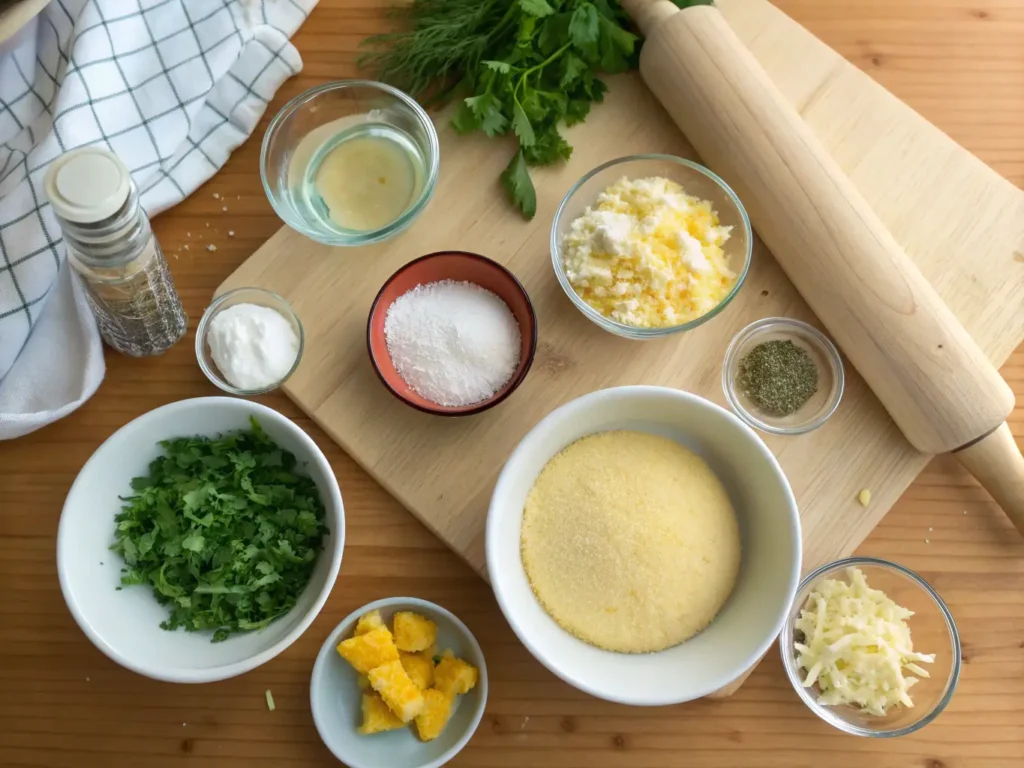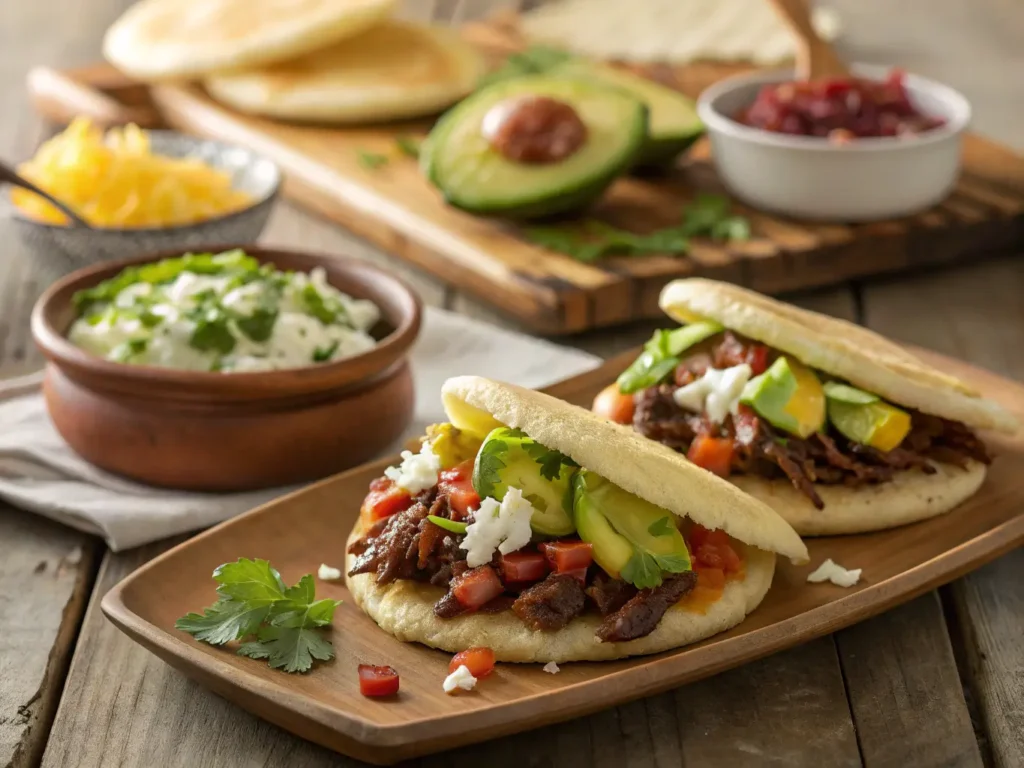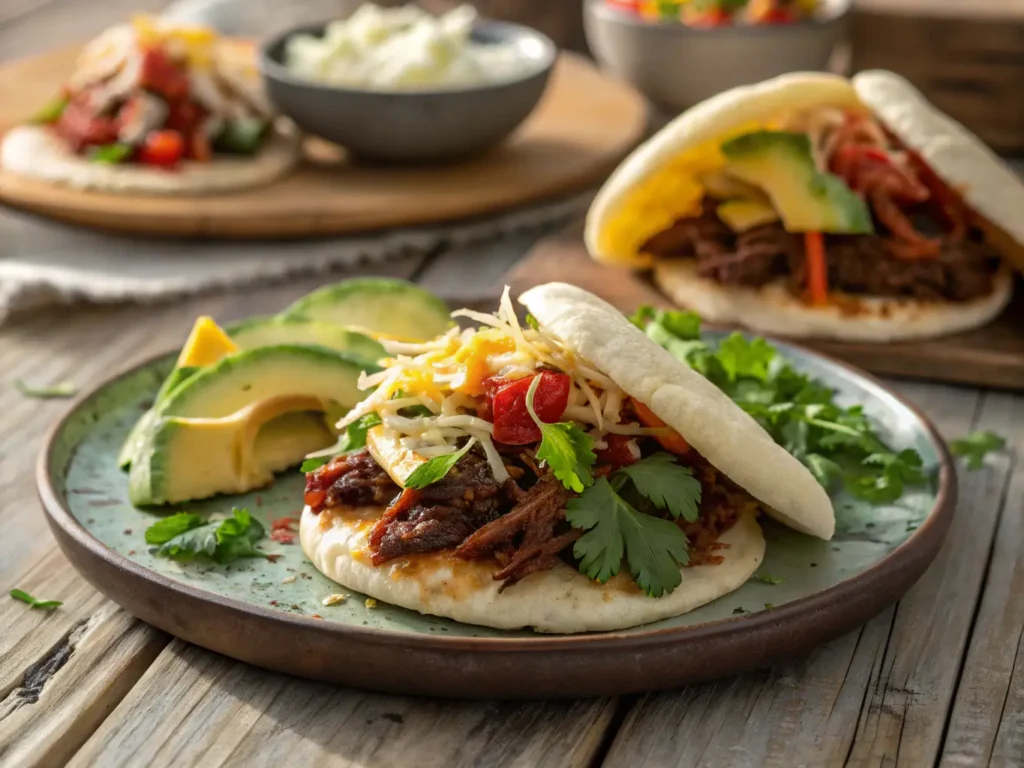Arepas are more than just food; they are a cherished tradition deeply woven into the culture of Latin America, particularly in Venezuela and Colombia . These golden discs of cornmeal have transcended borders, finding a place on plates worldwide. But what makes them so special? From their simple ingredients to their endless variations, arepa offer a taste of history, culture, and comfort in every bite. Let’s dive into everything you need to know about these versatile flatbreads, their origins, how to make them, and how to troubleshoot common problems.
Table of Contents
The History and Origins of Arepas
Arepas trace their roots to pre-Columbian times, with indigenous communities of the Americas being the original creators. The name itself is thought to derive from the word “erepa,” meaning “corn” in the language of the Timoto-Cuica people of Venezuela.
- Cultural Significance: Arepa were a daily staple for indigenous people, symbolizing sustenance and connection to the land. Over time, they evolved into a beloved dish in Venezuelan and Colombian households, each region adding its twist.
- A Culinary Rivalry: While Venezuela and Colombia both claim ownership of arepa, their preparations and fillings differ. Colombians often favor simplicity, serving arepas with butter or cheese, while Venezuelans are known for their indulgent stuffed arepa.
Ingredients for Making Arepas
Traditional Ingredients and Their Role
At its core, an arepa requires just three ingredients: precooked cornmeal, water, and salt. Each plays a critical role:

- Cornmeal gives arepa their signature texture and flavor.
- Water binds the dough, ensuring it’s pliable and easy to shape.
- Salt enhances the natural corn flavor.
Variations in Ingredients Across Regions
While the base ingredients remain consistent, regional preferences add flair:
- Cheese-filled arepas in Venezuela.
- Sweet arepas de choclo in Colombia.
- Herbs and spices for a savory twist in other countries.
How to Make Arepas at Home
Step-by-Step Recipe
Making arepa is straightforward, requiring minimal equipment and time.
- Ingredients:
- 2 cups of precooked cornmeal (e.g., Harina P.A.N.)
- 2 ½ cups of warm water
- 1 tsp salt
- Instructions:
- Mix water and salt in a bowl. Gradually add cornmeal while stirring.
- Knead the mixture until it forms a smooth, non-sticky dough.
- Divide into small balls, flattening them into discs about ½ inch thick.
- Cook on a hot griddle or skillet for about 5 minutes per side until golden brown.
“The key to perfect arepa is consistency. Your dough should feel like playdough—soft but firm enough to hold its shape.”
Tips for Perfect Texture and Taste
- Let the dough rest for a few minutes to absorb water fully.
- Adjust water if the dough feels dry or crumbly.
- Use a lightly greased pan for even cooking and a crispy crust.
Popular Variations of Arepas

Arepas de Choclo: A Sweet Twist
These arepas are made with fresh corn kernels mixed into the dough, giving them a slightly sweet flavor. They’re often served with a slice of melted cheese on top, perfect for breakfast or dessert.
Arepas Rellenas: Stuffed Arepas Delight
Venezuelan arepa shine in this category, stuffed with an array of fillings like shredded beef, black beans, avocado, or plantains. A crowd favorite is the “Reina Pepiada,” a creamy chicken and avocado mix.
Arepas Around the World
Venezuelan Arepas vs. Colombian Arepas
While Venezuelan arepa are often thicker and filled with hearty ingredients, Colombian arepa are thinner and typically served as a side dish.
| Feature | Venezuelan Arepas | Colombian Arepas |
|---|---|---|
| Thickness | Thicker | Thinner |
| Fillings | Always stuffed | Rarely stuffed |
| Popular Use | Main dish or snack | Side dish or breakfast |
Adaptations in Global Cuisines
arepa have found a home in international kitchens, adapted to suit local palates. From gluten-free arepa in health-conscious cafes to gourmet versions in upscale restaurants, their versatility knows no bounds.
The Nutritional Value of Arepas
Health Benefits of Key Ingredients
- Cornmeal is naturally gluten-free, making arepa a safe choice for those with celiac disease or gluten sensitivity.
- High in carbohydrates, they provide an excellent energy source.
Comparing Arepa to Other Flatbreads
Unlike tortillas or naan, arepa are unique in their thickness and ability to be split open and stuffed, making them both versatile and filling.
Common Problems When Making Arepas
Why Are My Arepa Too Hard or Crumbly?
This issue often arises from using too much cornmeal or too little water. Adjust the water ratio and knead longer to fix this.
Fixing Arepa That Won’t Cook Evenly
Uneven cooking usually results from a pan that’s too hot or dough that’s too thick. Reduce the heat and flatten the arepa more evenly.
“A good arepa cooks from the inside out. Always keep your heat moderate for the best results.”
Serving and Pairing Arepas
Best Fillings for Arepas
Arepa are endlessly versatile, and the fillings you choose can elevate them from simple fare to a culinary masterpiece. Here are some popular options:

- Shredded chicken or beef mixed with flavorful spices.
- Black beans paired with creamy cheese.
- Guacamole or sliced avocado for a fresh, light taste.
For a sweet twist, consider pairing your arepa with a unique side dish like a pineapple casserole, which balances savory flavors with a touch of fruity sweetness. Check out this pineapple casserole recipe for a delightful accompaniment to your meal.
Drinks and Sides That Complement Arepas
Pair arepa with these refreshing and delicious options:
Sides: Fried plantains, coleslaw, or a fresh salad are excellent choices to complement the hearty flavors of arepa .
Beverages: Enjoy arepa with a glass of chicha (a sweet rice drink) or classic black coffee.
Including a unique, sweet-savory dish like pineapple casserole not only diversifies the meal but also creates a harmonious blend of textures and flavors.
The Economic Impact of Arepas
The Role of Arepa in Local Markets
Arepa are not just food; they are an economic staple in Venezuela and Colombia. Small vendors, known as “areperas,” are the backbone of street food culture in these countries. These humble establishments often sell freshly made arepa filled with an assortment of ingredients, providing affordable meals to locals and tourists alike. For many, selling arepa is a livelihood, offering financial independence and sustenance to countless families.
The affordability of ingredients like cornmeal and the simplicity of preparation make arepa an accessible business opportunity. Vendors can start small with minimal investment, making it an attractive option for entrepreneurs in developing economies.
The Growing Global Popularity of Arepa
With the rise of Latin American cuisine’s popularity worldwide, arepa have made their way onto menus in cities far removed from their origins. Restaurants specializing in Latin American dishes have introduced arepa to international audiences, creating demand for imported cornmeal products like Harina P.A.N. This growth has also led to economic opportunities in export markets, boosting the production of arepa-related goods.
“Arepa are a cultural export that unites people through food, crossing borders and creating economic opportunities in the process.”
Frequently Asked Questions About Arepas
What Are the Best Flours for Arepa ?
The best flour for traditional arepa is precooked cornmeal, often labeled as “masa arepa.” Harina P.A.N. is a widely recognized brand that ensures authentic results. For gluten-free options, some flours made from alternative grains or root vegetables are also effective.
Can Arepa Be Made Gluten-Free?
Yes! Since they are traditionally made from cornmeal, arepa are naturally gluten-free. Just ensure your cornmeal is labeled gluten-free to avoid cross-contamination.
How Do I Store and Reheat Arepa ?
To store arepa , let them cool completely before wrapping them in plastic or placing them in an airtight container. Refrigerated arepa can last up to three days. To reheat, place them on a hot skillet or griddle for a few minutes on each side until warm and crispy.
Why Do My Arepa Crack While Cooking?
Cracks typically indicate that the dough is too dry. Adding a bit more water and kneading thoroughly can solve this issue. Make sure the dough feels pliable and moist but not sticky.
What Are the Healthiest Arepa Fillings?
For a healthy twist, consider fillings like grilled chicken, sautéed vegetables, or avocado. Avoid fried options or heavy cheeses if you’re watching your calorie intake.
Can I Bake Arepa Instead of Frying or Grilling?
Absolutely. Baking arepa is a healthier alternative. Preheat your oven to 375°F (190°C) and bake for about 20 minutes, flipping them halfway through. They’ll turn out slightly crispy on the outside and soft on the inside.
Final Thoughts
arepa are a culinary gem that carries the spirit of Latin America to every table they grace. Whether you’re enjoying them as a quick street snack, a homemade treat, or a restaurant delicacy, their versatility and rich history make them a delight for everyone. They’re not just food; they’re a bridge to culture, tradition, and shared experiences. Why not try making them at home and discover the joy of arepa for yourself?
Conclusion: Celebrating the Timeless Charm of Arepas
Arepas have stood the test of time, offering comfort, flavor, and a glimpse into the cultural tapestry of Latin America. Whether you prefer them sweet, savory, plain, or stuffed, there’s an arepa for everyone. So why not try making them yourself and enjoy a piece of history with every bite?

